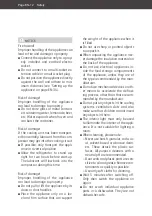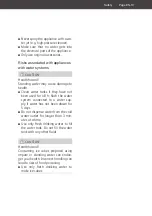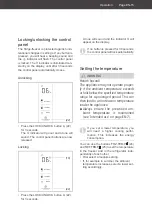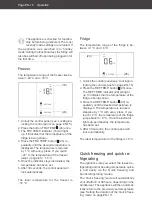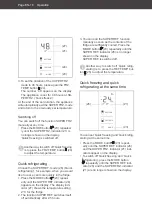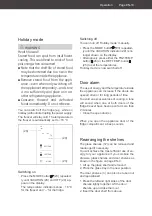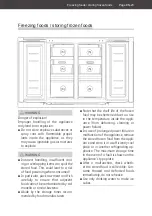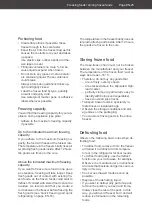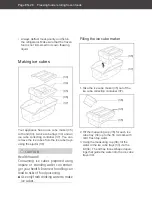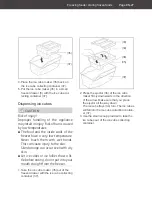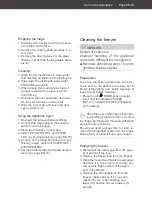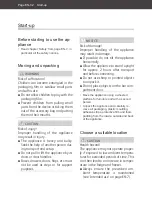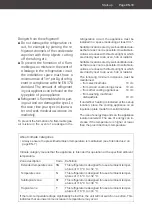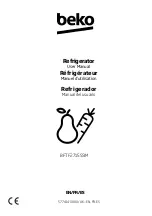
Freezing foods / storing frozen foods
Page EN-25
Portioning food
• Create flat portions if possible; these
freeze through to the core faster.
• Expel the air from the freezer bag as this
causes the contents to dry out and takes
up space.
• Use plastic clips, rubber bands or adhe-
sive tapes to seal.
• Fill liquid containers no more ¾ full, be-
cause liquids expand when frozen.
• Do not store any glass or metal contain-
ers containing liquid. These containers
could break.
• Always store strong alcoholic drinks up-
right and tightly closed.
• Label the frozen food by type, quantity,
amount and expiry date.
Use waterproof marker pens or adhesive
labels wherever possible.
Freezing capacity
You will find the freezing capacity for your ap-
pliance on the appliance type plate.
• Adhere to the maximum freezing capacity
if possible.
Up to the indicated maximum freezing
capacity:
If you adhere to the maximum freezing ca-
pacity, the food will freeze at the fastest rate.
The temperature in the freezer briefly rises af-
ter placing fresh goods inside. After 12 hours,
the goods are frozen to the core.
Above the indicated maximum freezing
capacity:
If you want to freeze more food in one go as
an exception, freezing will take longer. Keep
fresh goods out of contact with existing fro-
zen foods, as the frozen foods could start to
defrost. If contact with stored food cannot be
avoided, we recommend that you create a
cold reserve in the freezer before freezing the
fresh goods (see ‘Quick freezing and quick
refrigerating’ on page EN-16).
The temperature in the freezer briefly rises af-
ter placing fresh goods inside. After 12 hours,
the goods are frozen to the core.
Storing frozen food
The deep-freeze chain must not be broken
between the manufacturer and your freezer.
The temperature of the frozen food must al-
ways be at least –18 °C.
• Therefore, do not buy any goods that
– are in frosty, over-icy chests.
– are stacked above the stipulated high-
load marker.
– partially clumped (particularly easy to
identify with berries and vegetables).
– have snow and juice traces.
• Transport frozen foods in special styro-
foam boxes or insulated bags.
• Observe the storage conditions and stor-
age times on the packaging.
• You can store frozen goods in the entire
freezer.
Defrosting food
Observe the following basic rules when de-
frosting food:
• To defrost food, remove it from the freezer
and allow it to defrost at room tempera-
ture or in the refrigerator for best results.
• To defrost food quickly, use the defrost
function on your microwave, for example.
Observe the manufacturer’s instructions
and note that bacteria and germs can mul-
tiply in this way.
• Cook or use thawed foods as soon as
possible.
• Dispose of the defrosting liquid.
• If you want to defrost only part of a pack,
remove the portion you need and imme-
diately close the rest of the pack. In this
way, you will avoid ‘freezer burn’ and will
reduce ice formation on the remaining
foods.


